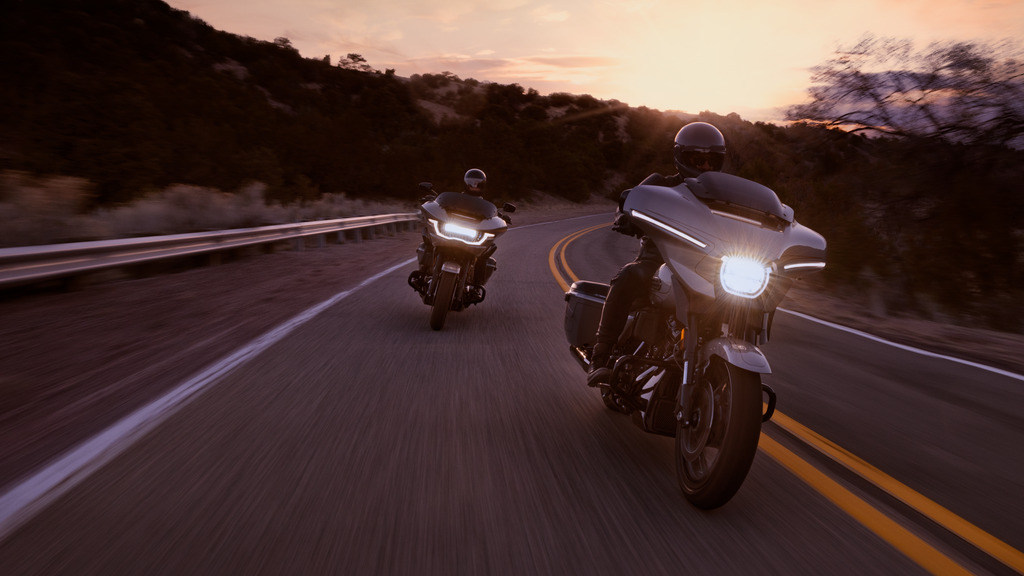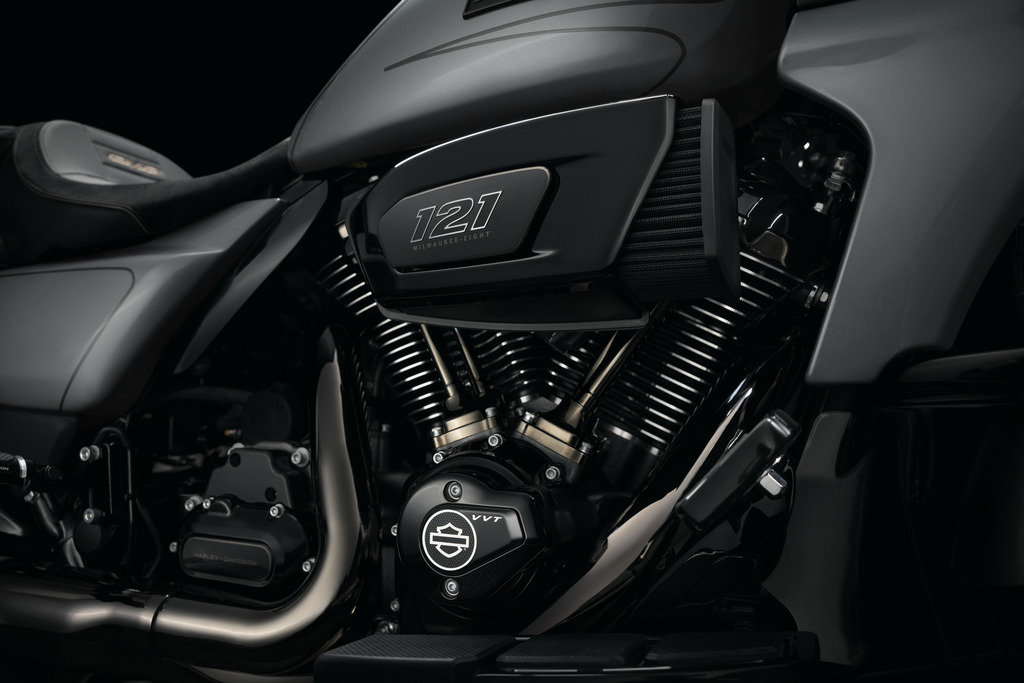After serving you the news about Harley’s new hi-tech CVO baggers back in April, H-D has officially divulged all the information about the mid-year introduction of its new 2023 CVO Street Glide and CVO Road Glide models. 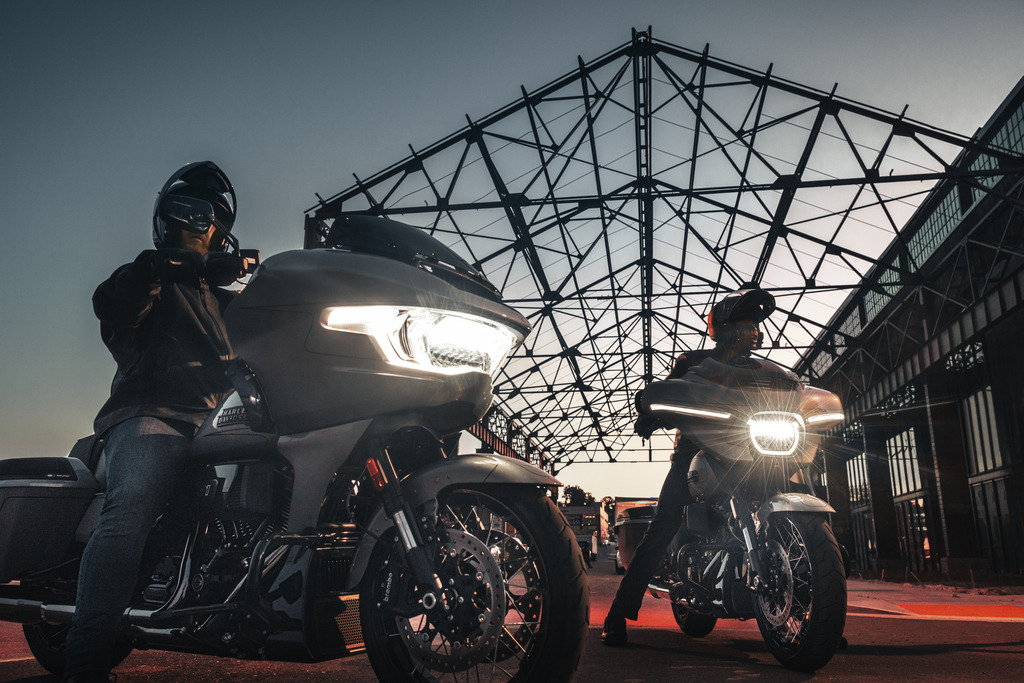
On top of the raft of technological and mechanical upgrades, both machines get exclusive CVO fairing updates giving the high-end Harley baggers a fresh new look.
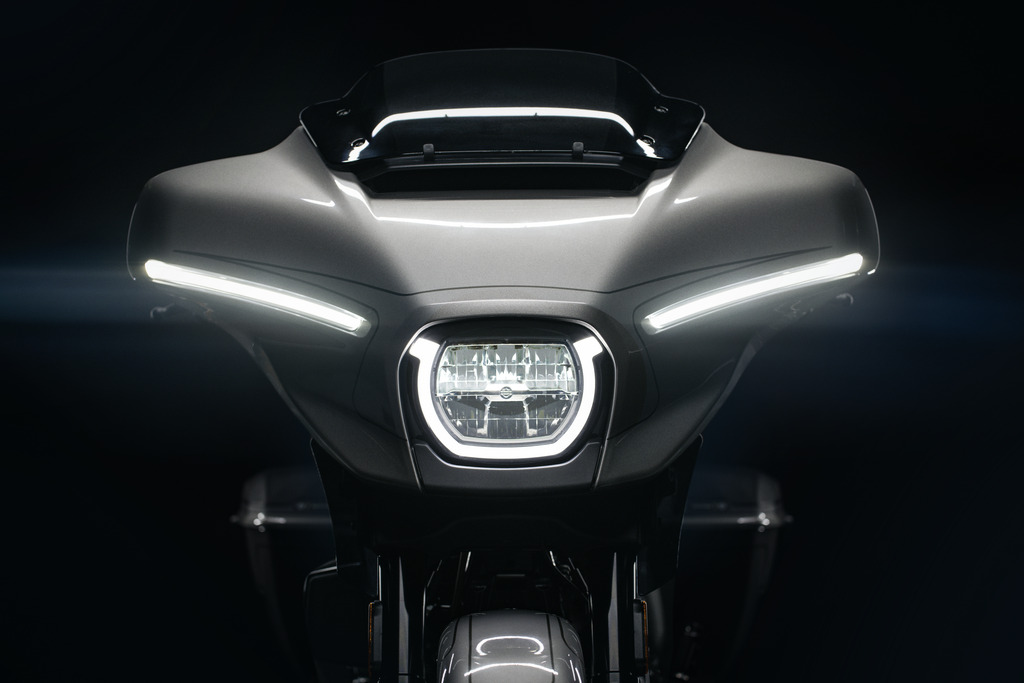
The CVO Street Glide sports an all-new batwing that retains the iconic “T” shape, and now features a fully integrated splitstream vent and more pronounced undercuts beneath the headlamp. LED turn signals are integrated into the new LED headlight’s left and right lamp elements, eliminating separate turn signals for a cleaner over-all look.
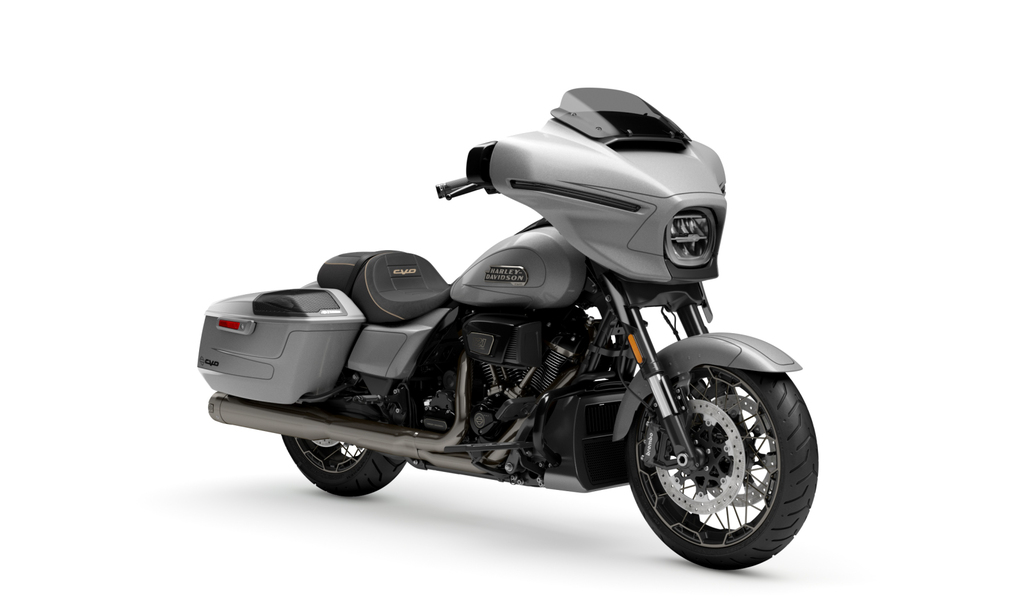
The Road Glide has received similar treatment with Harley giving the classic ‘sharknose’ fairing the CVO makeover while also integrating the indicators into the front lighting package eliminating the bullet turn signals used on non-CVO models.
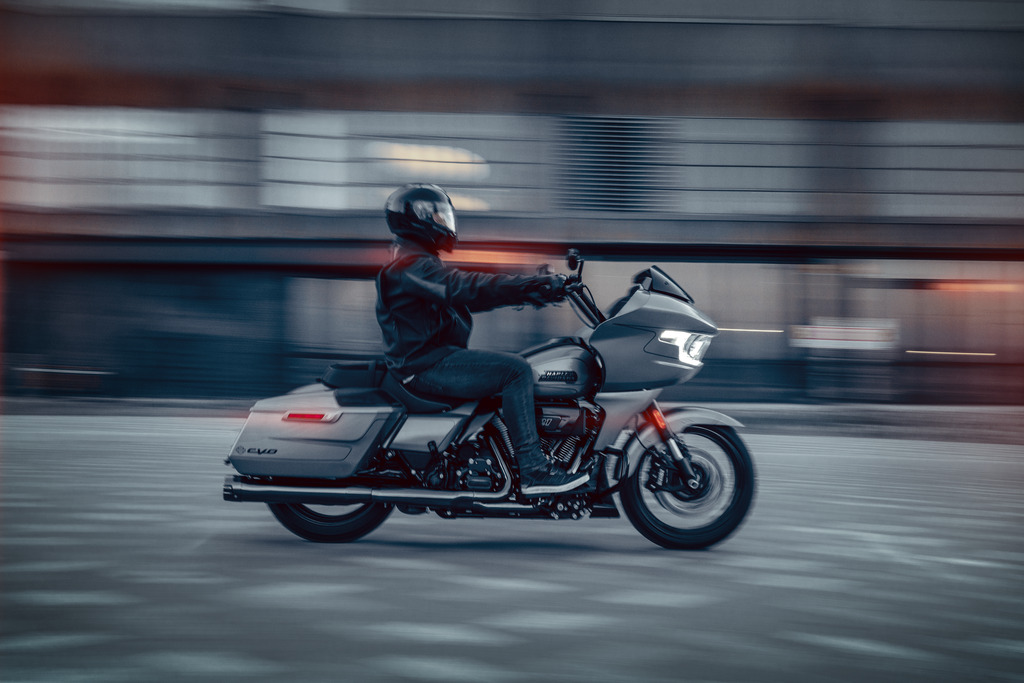
Other new design elements featured on the two new models include trimmed front guards that reduce visual mass at the front of the bike revealing more of the distinctive new 19-inch wheel, inverted forks and Brembo radial brake calipers, new Combo Cast Laced wheels (19-inch front/18-inch rear) with tyre pressure monitoring system, and new more compact-looking luggage which actually offer slightly more volume than previous models.
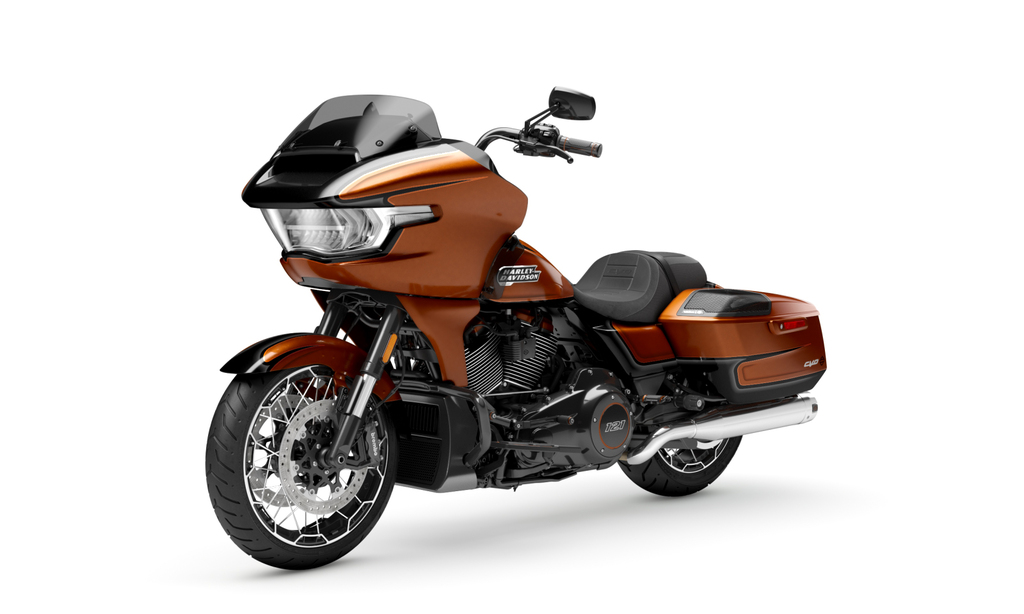
The new CVO Street Glide and CVO Road Glide models will carry a starting price of $62,495 for the Dark Platinum with Bright Smoked Satin pinstriping colourway, while the two-tone Whiskey Neat/Raven Metallic colour will set you back an extra $7810 carrying a starting price of $70,305.
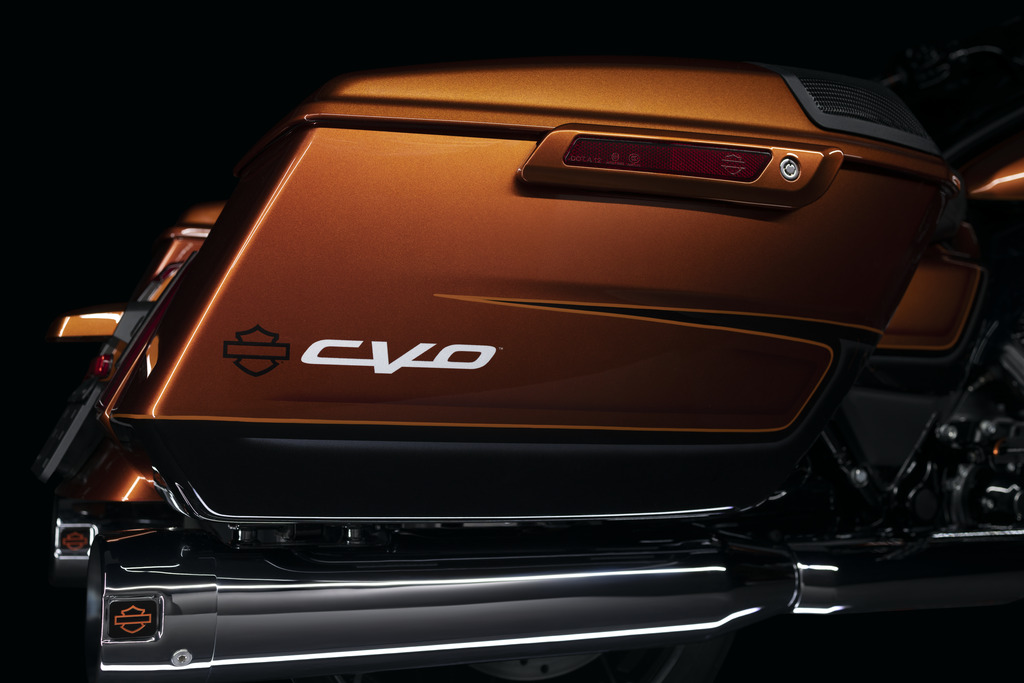
Apart from the obvious cosmetic makeover, the big news is the introduction of the new 121CI (1977cc) Milwaukee-Eigh VVT engine. The new powerplant is equipped with a number of new features, including liquid-cooled cylinder heads, variable valve timing (VVT), and a new intake tract, while a single counter-balancer is tuned to cancel undesirable vibration.
Milwaukee-Eight VVT 121 Specs
- Displacement: 121 cubic inches (1977cc)
- Bore x Stroke: 103.5mm x 117.5mm
- Compression Ratio: 4:1
- Torque: 183Nm torque at 3500 RPM
- Power: 86kW (115hp) at 5020rpm
Variable Valve Timing (VVT) broadens the overall powerband, improves torque management and enhances efficiency to increase range from each tank of fuel (compared to the same engine with fixed valve timing). Through computer control, VVT advances or retards camshaft timing infinitely through a potential range of 40 degrees of crankshaft rotation (20 degrees of camshaft rotation).
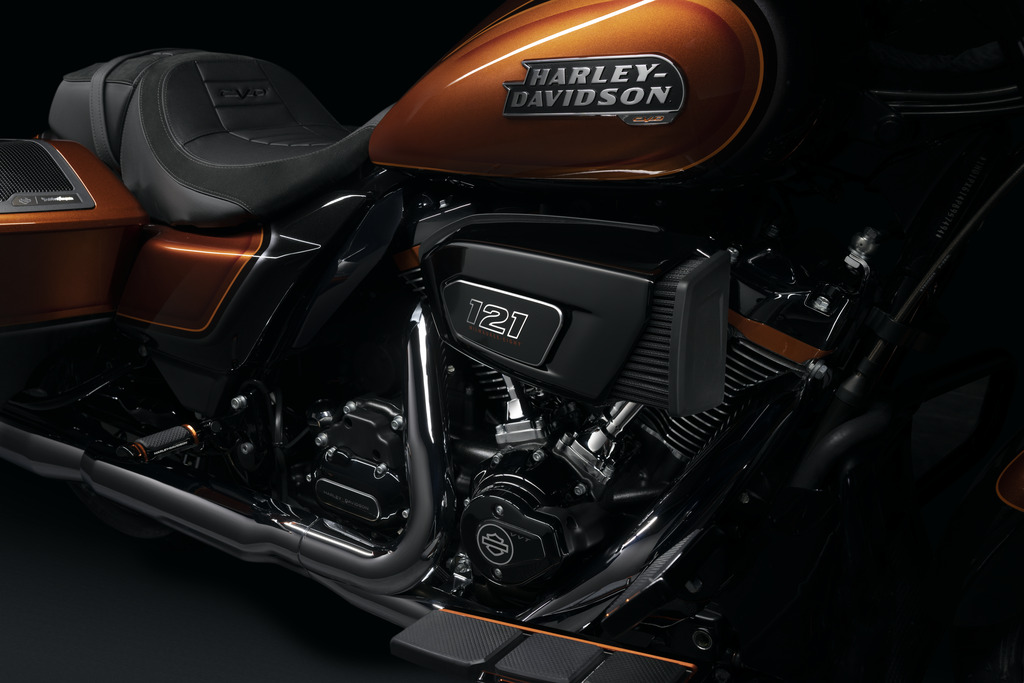
Redesigned four-valve cylinder heads incorporate new channels for coolant flow around the exhaust valve areas. An electric pump circulates a coolant first to the hotter rear cylinder head, then to the front cylinder head, and then to a radiator located low on the front of the frame and backed by a thermostatically controlled fan. Airflow from the fan is directed below the motorcycle for improved rider and passenger comfort, especially at low vehicle speeds.
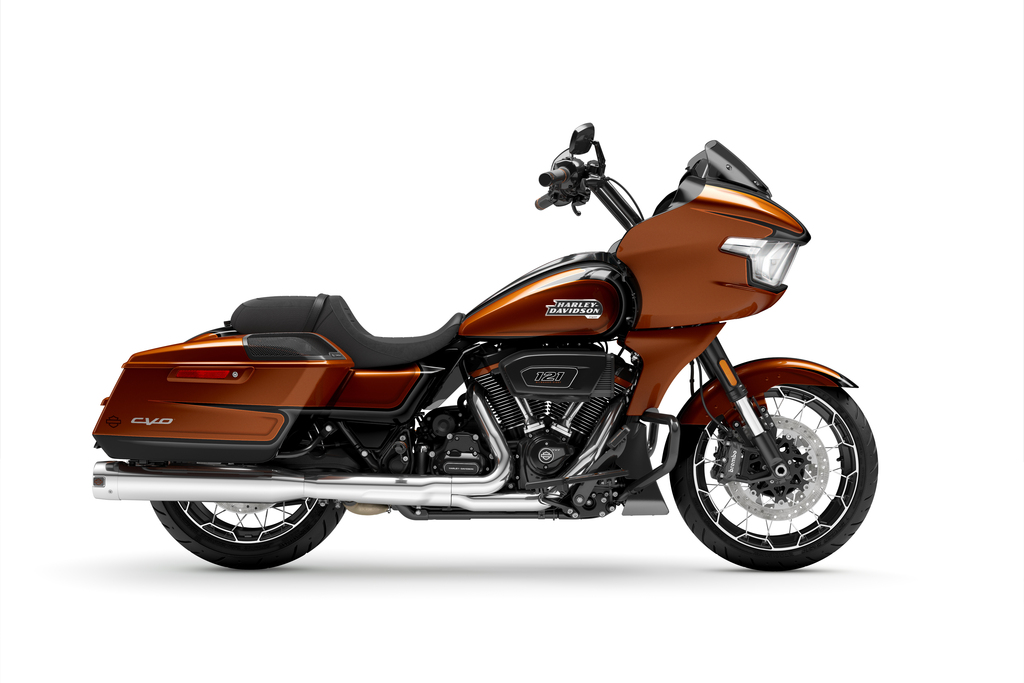
New cylinder heads feature a combustion chamber reshaped with oval intake ports, low-profile intake valve seats and an enhanced squish band, which combined, increase intake air velocity and tumble and accelerate combustion to improve performance and fuel economy. Improvements in cylinder head cooling design, burn rate in the combustion chamber, and enhanced knock sensing to protect the engine from pre-ignition has allowed the compression ratio to increase to 11.4:1 from 10.2:1 (2022 Milwaukee-Eight 117 engine) enhancing torque at lower RPM and according to H-D, improving fuel economy.
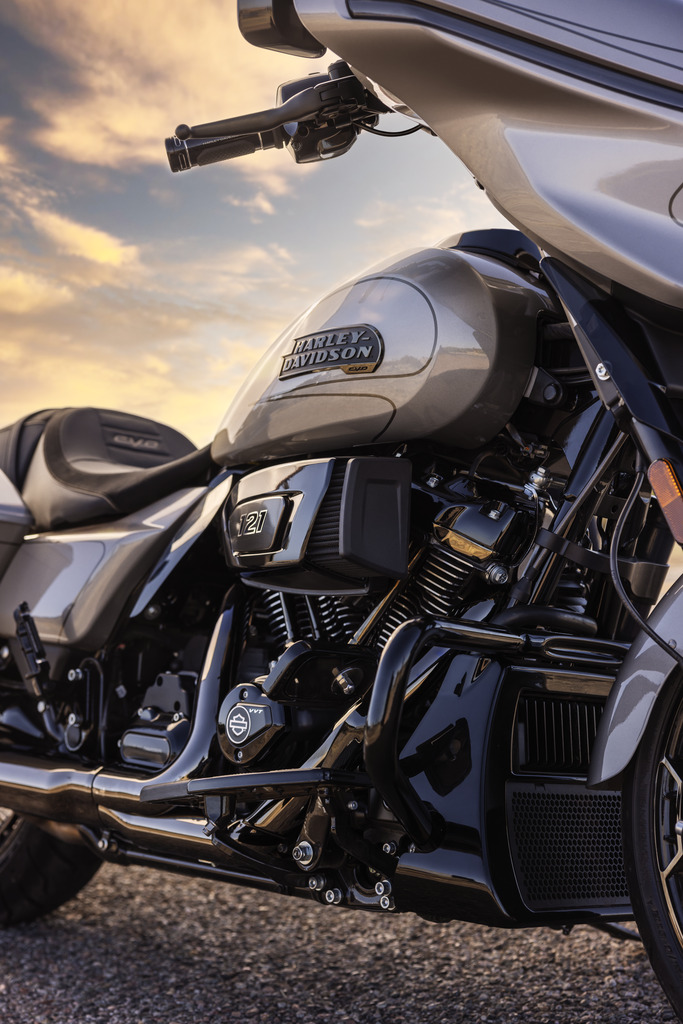
A high-performance camshaft with higher lift and longer duration than the Milwaukee-Eight 117 camshaft contributes to increased power and torque. The valvetrain is updated with high-capacity lifters and inner cam bearing, and valve springs capable of higher lift, to maintain durability with the more-aggressive camshaft in place.
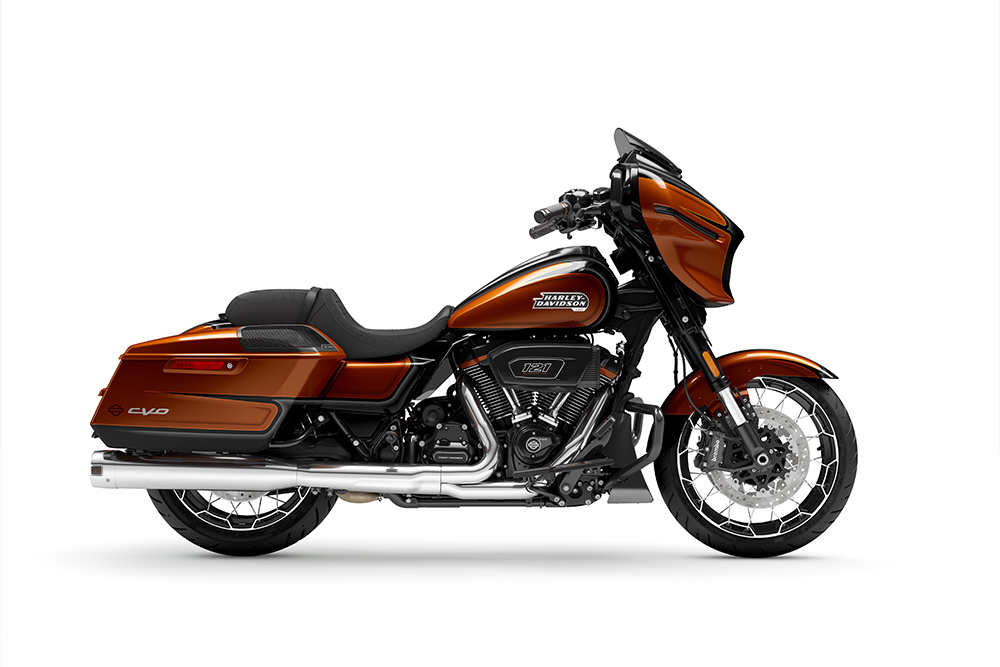
A new intake tract contributes to increased power and lower exhaust emissions. The throttle body diameter is increased to 58mm from the 55mm used on Milwaukee-Eight 117 engines, and the throttle body is positioned closer to the centre of the cylinder spacing and to the intake valves to enhance intake airflow.
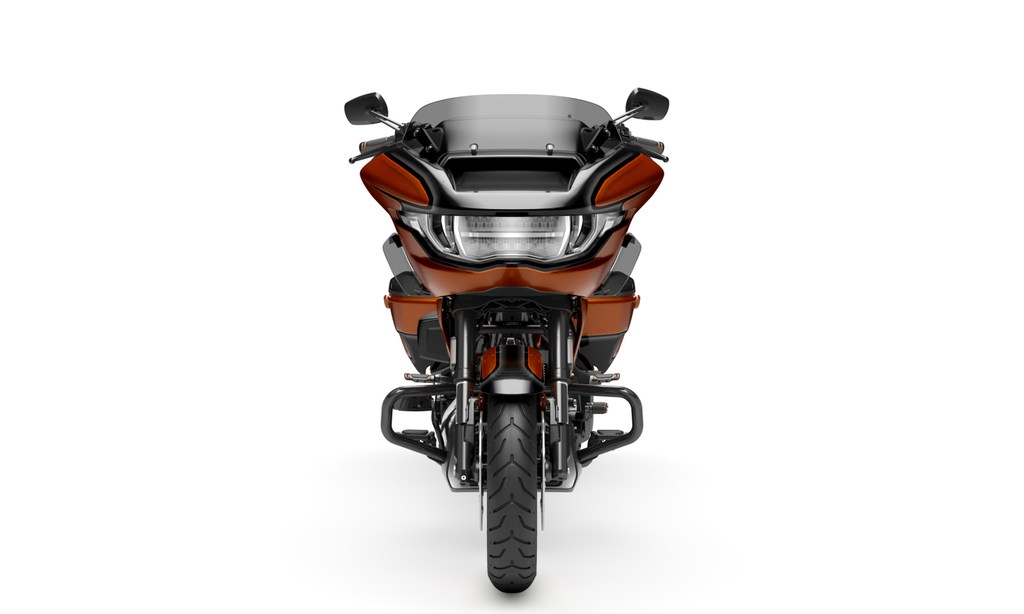
To complement the new Milwaukee-Eight VVT 121 engine the weight of both models has been reduced with the 2023 CVO Street Glide weighing 13kg less and the 2023 CVO Road Glide model 12kg less than the 2022 CVO models they replace. This reduction was achieved by shaving grams whenever possible.
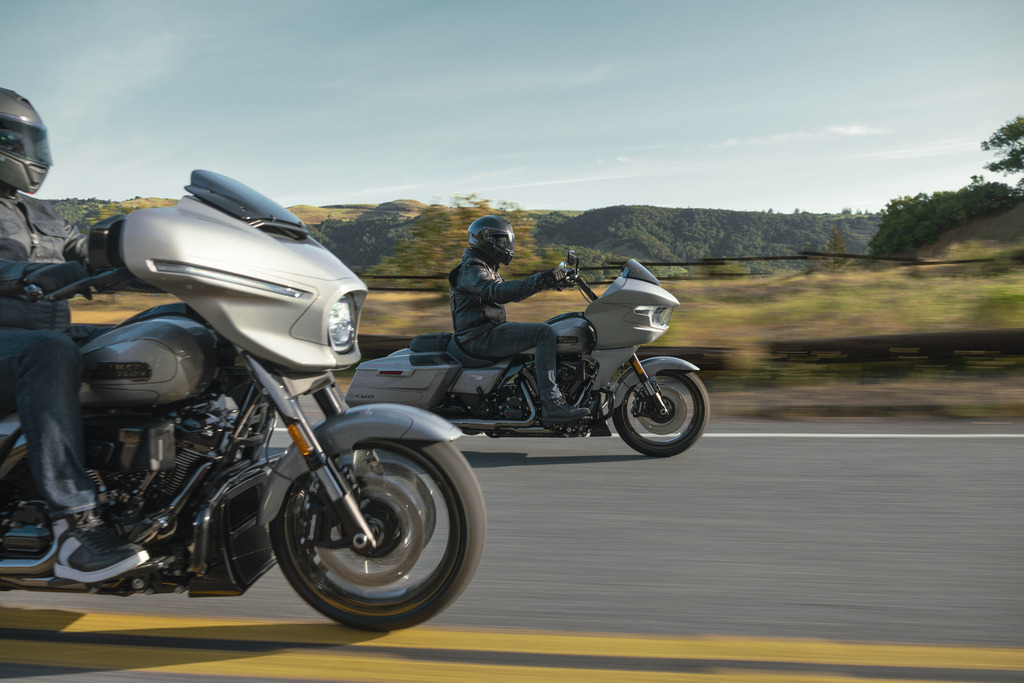
Front suspension duties are handled by 47mm Showa non-adjustable USD forks with 117mm of travel, while out back, rear suspension is handled by a set of Showa emulsion technology shocks with remote hydraulic preload adjustment and rebound adjustment via a dial on the bottom of each shock absorber, which requires the removal of the saddlebags. Rear suspension travel has increased by 50 percent compared to comparable 2022 Grand American Touring models with 76mm now on offer.
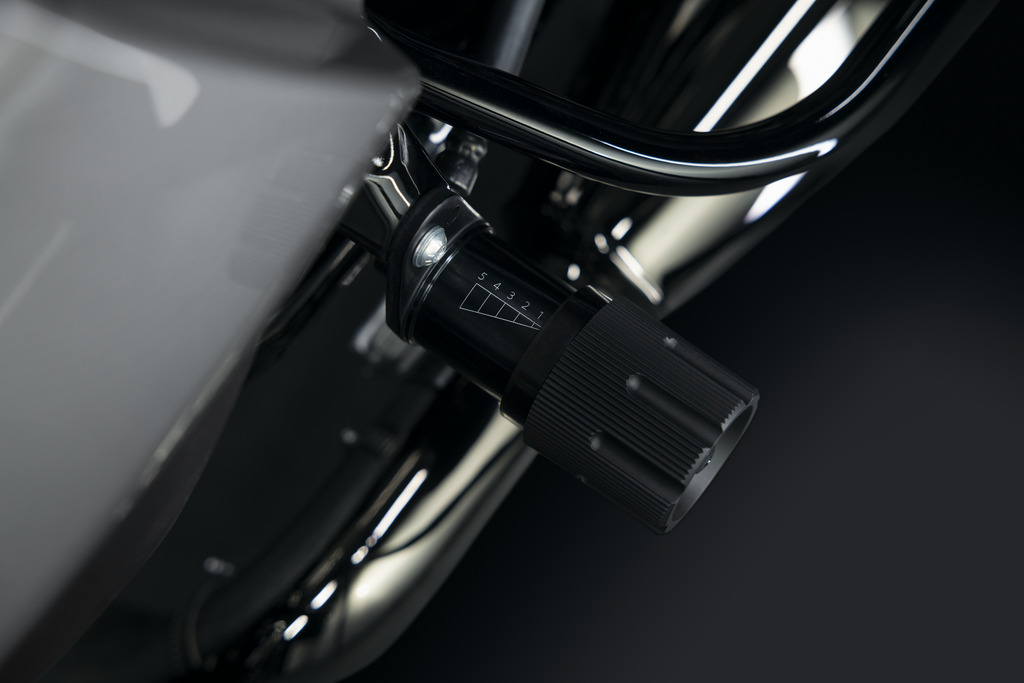
Braking is provided by Brembo with radially mounted four-piston calipers biting into a set of larger 320mm discs on the front and a four-piston Brembo caliper clutching at a 300mm disc on the rear.
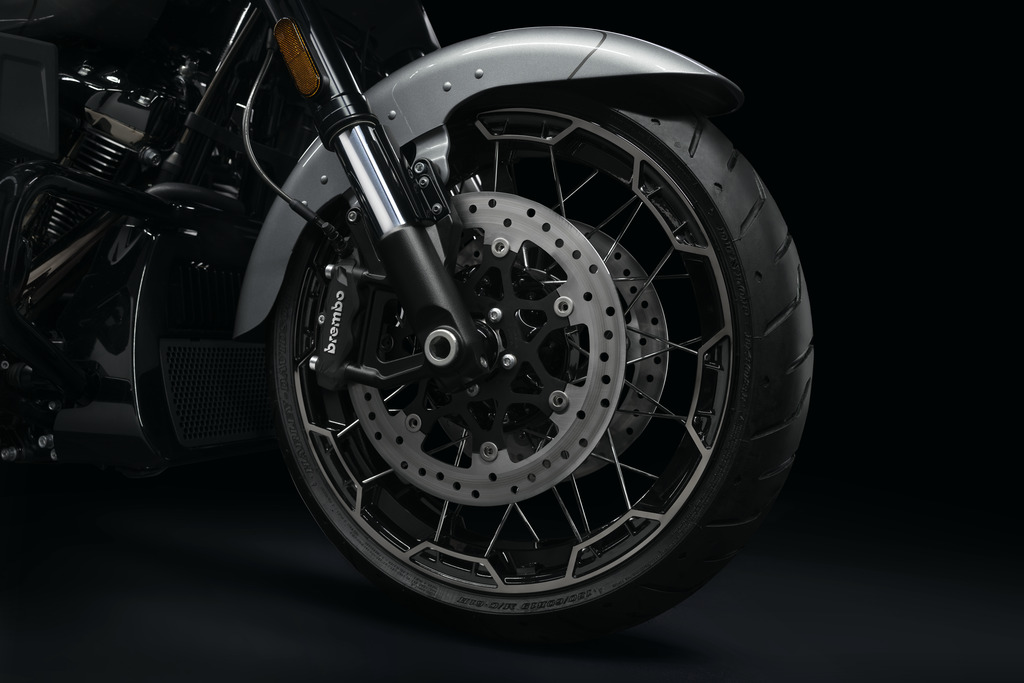
For the first time, the CVO Street Glide and CVO Road Glide models offer selectable Ride Modes that electronically control the performance characteristics of the motorcycle and the level of technology intervention. Each Ride Mode consists of a specific combination of power delivery, engine braking, Cornering-Antilock Braking System (C-ABS) and Cornering-Traction Control System (C-TCS) settings.
- Road Mode: Less-aggressive throttle response and less mid-range engine power than Sport Mode, with a higher level of C-ABS and C-TCS intervention.
- Sport Mode: Full power and the quickest throttle response. C-TCS is set to its lowest level of intervention, and engine braking is increased.
- Rain Mode: Throttle response and power output are programmed to significantly restrain the rate of acceleration, engine braking is limited, and the highest levels of C-ABS and C-TCS intervention are selected.
- Custom Mode: Two Custom Ride Modes available that allow the rider to adjust engine torque delivery characteristics, engine braking, throttle response, and C-TCS and C-ABS intervention.
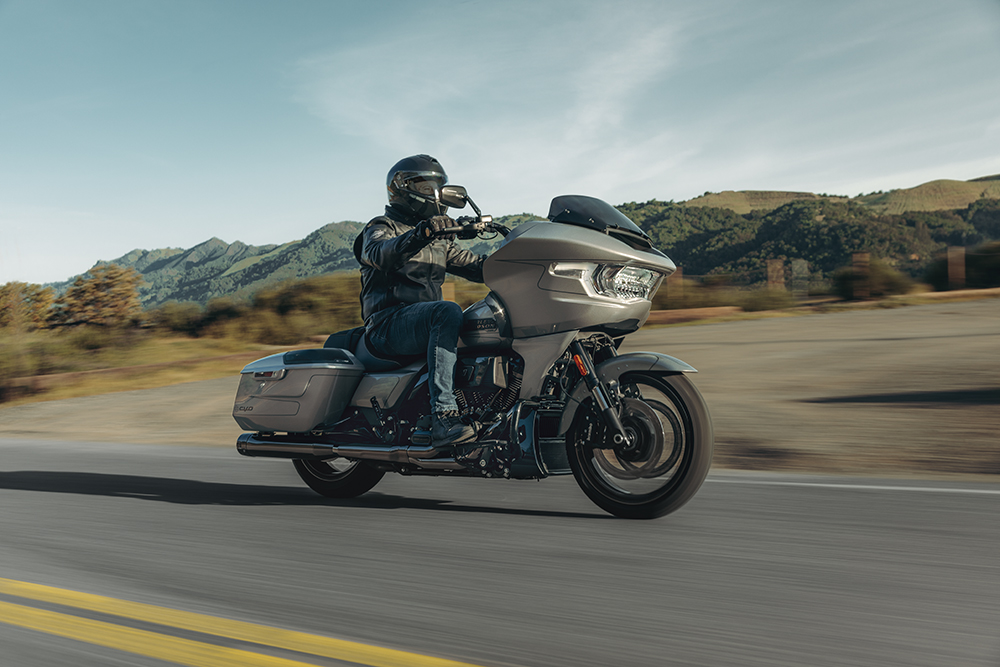
As well as the selectable ride modes there is a selection of rider aids on board.
- Cornering Electronically Linked Brakes (C-ELB)
- Cornering ABS (C-ABS)
- Cornering Traction Control (C-TCS) with modes
- Cornering Drag Torque Slip Control (C-DTSC)
- Vehicle Hold Control (VHC)
- Tyre Pressure Monitoring (TPMS)
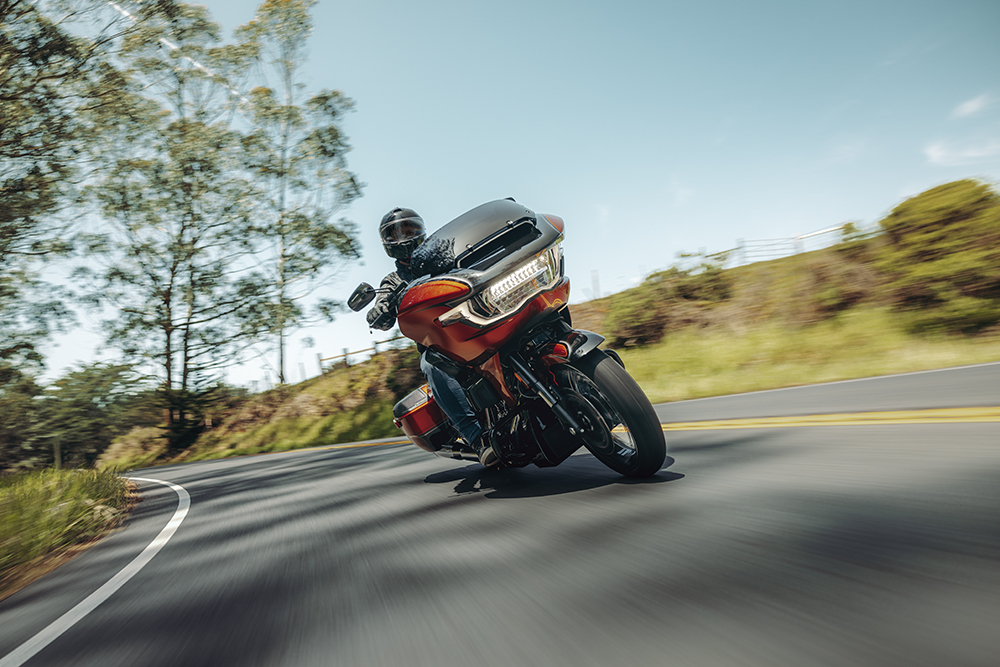
Aero and Thermal Comfort are taken care of by all-new fairings with a “floating” windshield design, part of a completely new aerodynamic system. According to H-D, each aero system element was created using CFD (computational fluid dynamics) tools, wind tunnel analysis and real-world subjective testing with an emphasis on reducing rider helmet buffeting at highway speed.
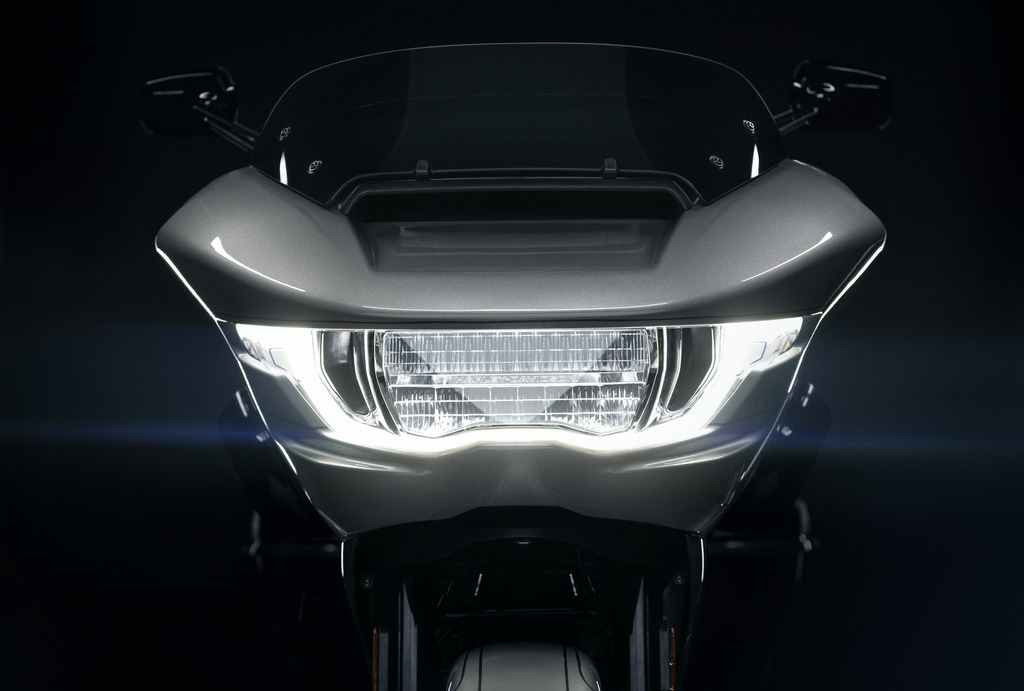
Ergonomics have also come under the microscope with each model receiving a redesigned seat shape and padding materials offering an improvement in long-range comfort. The seat height for both models comes in at 678.18mm.
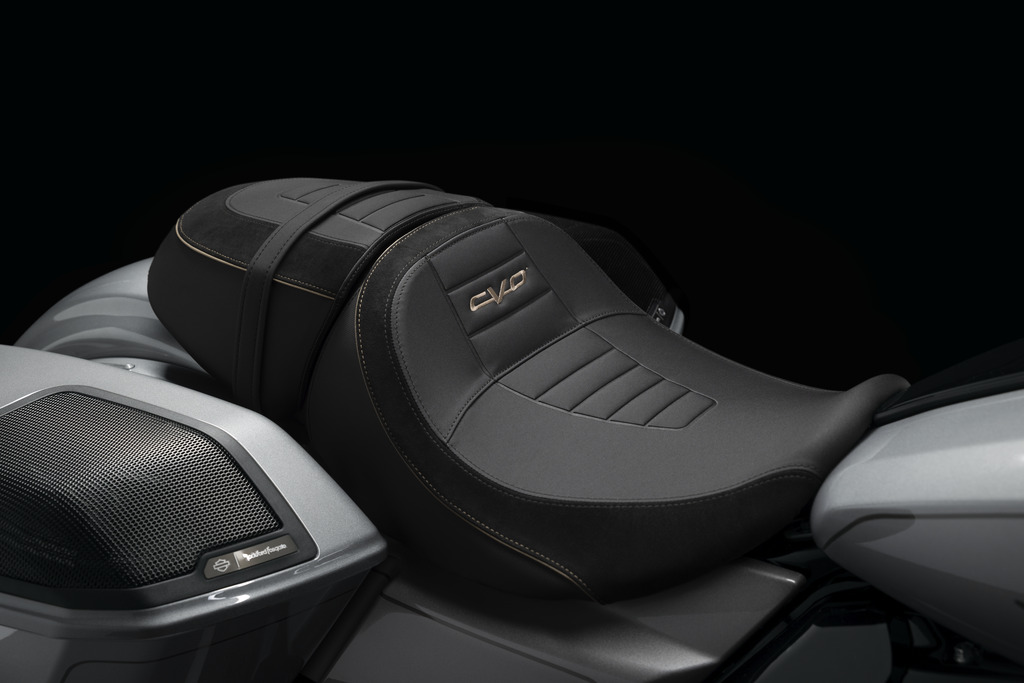
The front brake lever is adjustable for reach, there are two pre-wired connection points for heated gear and both models come standard with heated grips and can be adjusted on the grip or through the infotainment system.
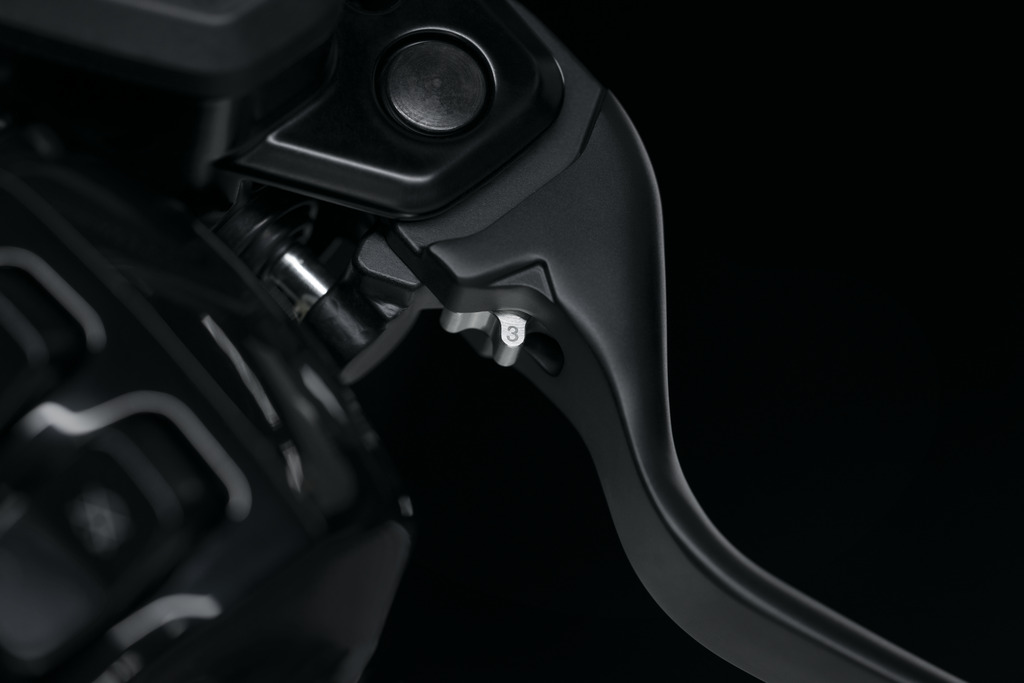
The Road Glide receives a wider, flatter bar that offers 27-degrees of adjustment.
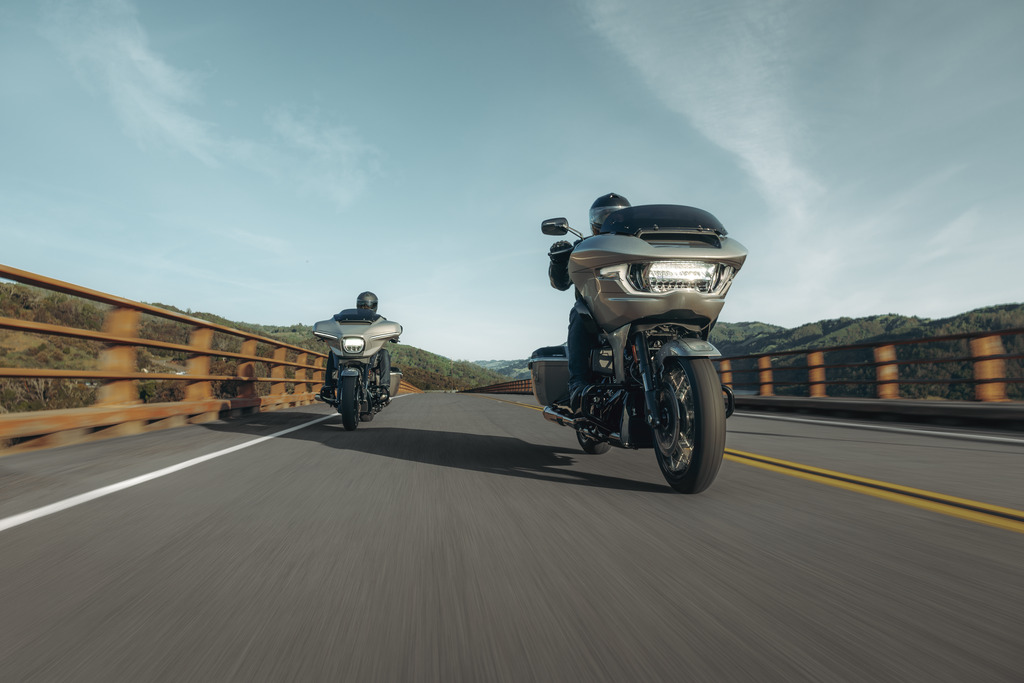
The CVO baggers introduce an all-new suite of infotainment technology powered by the new Skyline OS. A 12.3-inch TFT colour touchscreen replaces all analogue instrumentation and most switches found on previous CVO models, and the new display is customisable within three distinct view options and is compatible with Apple and Android devices
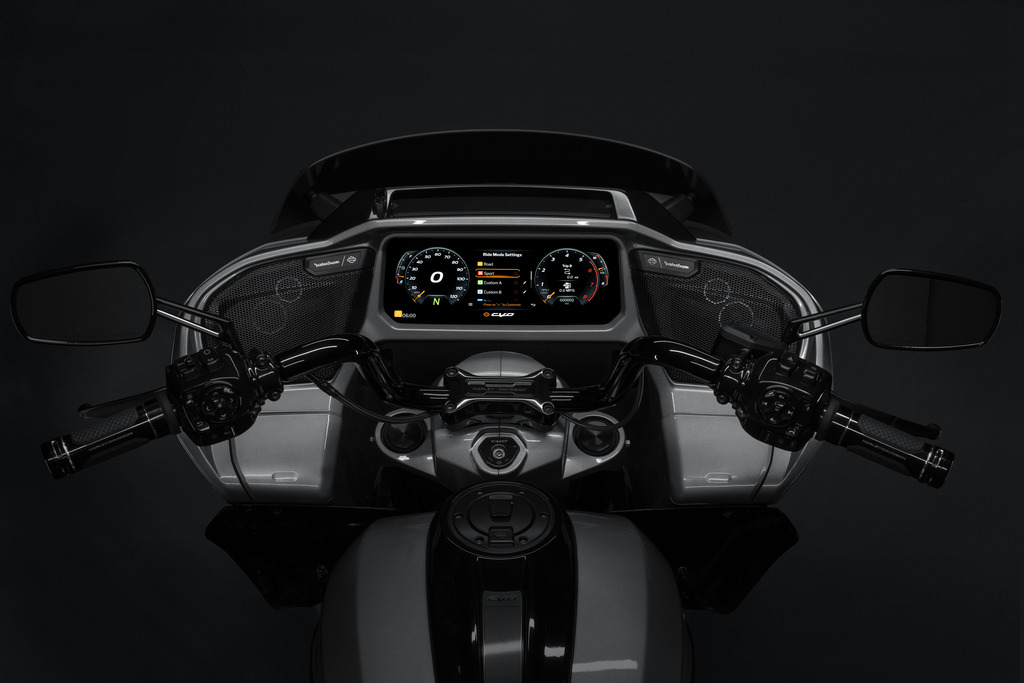
The CVO Street Glide and CVO Road Glide models each feature the following new infotainment features:
- The 12.3-inch (diagonal measurement) TFT screen is 90 percent larger diagonally than the 6.5-inch BOOM! Box GTS screen featured on previous CVO models and offers more than 400 percent more screen area and features anti-reflective and anti- fingerprint coatings.
- Wi-Fi connectivity enables wireless connection to a rider’s device and provides live services such as traffic, weather and navigation map.
- The new Voice Recognition System is conversational rather than “fixed prompts” and allows the rider to make general commands like “Find me a gas station” to perform a search on Navigation. Free map updates for the embedded navigation system are available for three years.
- The new built-in user interface on the touch screen allows the owner to activate the ECU programming required for the installation of certain accessories (for example fog lights, HomeLink, heated grips); these updates previously were completed by an authorised Harley-Davidson dealer. The owner can now complete the installation of these accessories.
- DAB (Digital Audio Broadcasting) is now available for Australia and certain other markets. The AM/FM/DAB antenna is located within the fairing, replacing the whip antenna.
- The Bluetooth receiver for wireless headsets is now built into the system – a separate module is no longer required.
- The CVO Road Glide inner fairing incorporates left and right-side media storage compartments, each sized to hold most current mobile phones in a case. The door for each is opened by pressing down to release the latch, and the door springs open on its own and stays. The right-hand side compartment is equipped with a USB-C connection point.
- The CVO Street Glide inner fairing incorporates a single media storage drawer with USB-C connection point, located directly below the infotainment display screen. It opens and slides out at the push of a button and has a premium liner to protect mobile devices. The media drawer measures approximately 254mm wide by 203 mm deep – significantly more than previous batwing fairing media compartments.
- Both models are equipped with Harley-Davidson Audio powered by Rockford Fosgate Stage II audio system with a new 4-channel, 500-watt RMS amplifier.
- The audio system includes 3-way 6.5-inch fairing speakers, 150 watts RMS power handling per speaker and Stage II 3-way 5×7-inch saddlebag speakers.
- Multiple preset EQ curves are available (e.g., Rock, Dance) through the touch screen; 7 Band EQ is available for creating Custom EQ settings.
- The new 500-watt amplifier is capable of powering additional 6×9-inch saddlebag speakers available separately from the Harley- Davidson Genuine Motor Parts & Accessories catalogue.
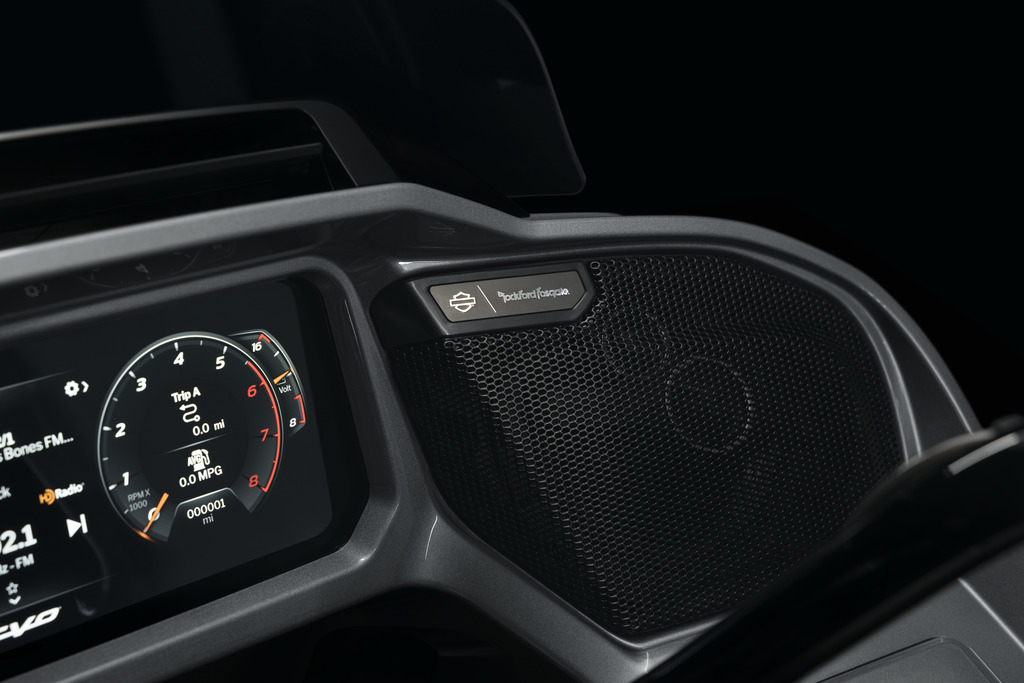
The rider can choose from three screen display options:
- Cruise: The most traditional presentation depicts a separate speedometer and tachometer with satellite gauges for fuel level and engine Minimal widget info may be contained within the tachometer.
- Sport: Intended for performance riders, this view places a dial tachometer in the middle of the display with a digital speedometer in its centre. This view expands spaces for widgets to give the rider opportunity to display more
- Tour: Intended for long-haul riders and displays a centred navigation map and turn-by-turn instructions from Apple device projection or the embedded navigation display. Widget information can be displayed to the right of the map, or the rider can change to Full View to expand the map over more of the display
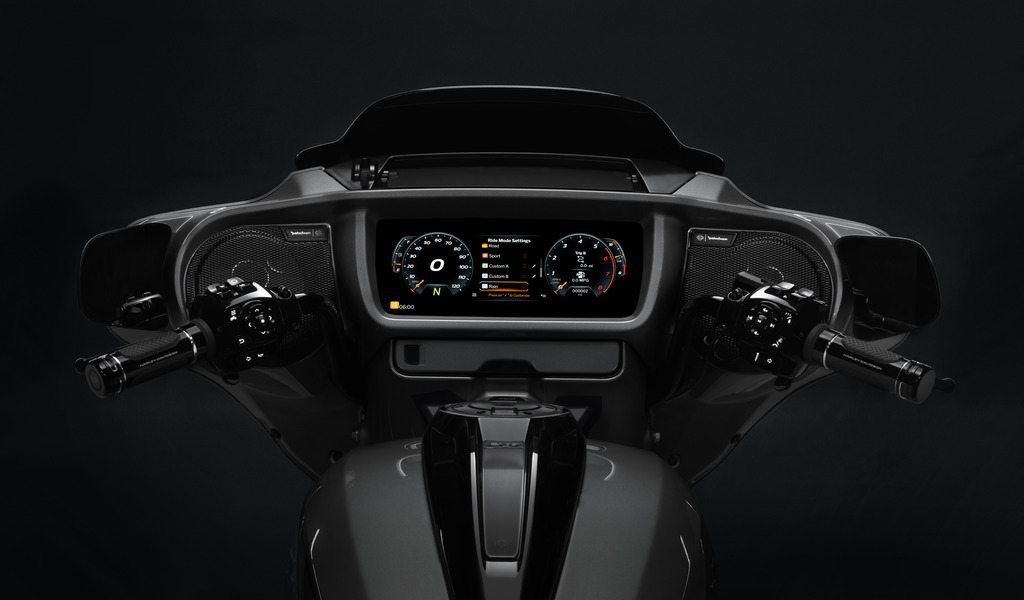
High Contrast Mode: The rider can change the display appearance to High Contrast Mode. If Auto Day/Night Mode is enabled with High Contrast, the display will automatically change between High Contrast and Dark Mode based on ambient lighting conditions.
Widgets: The rider may use the Trip Switch to select the widget they want to be shown. In addition, there is a “Blank” widget for users that want to display minimal content.
- The Cruise layout has space for minimal widget information: Compass, TPMS, Outside Temp + Range, Trip-A/B + Avg. Fuel.
- The Sport and Tour layouts have more information options: TPMS + Target Inflation, Trip- A/B + Compass + Speed + Trip Time, Outside Temp + Date + Range + Engine Temp, Playlist/Station View.
Harley-Davidson Ride Planner: Routes configured on the Harley-Davidson Ride Planner website can be transferred to the embedded navigation system using the H-D App. The H-D App also informs the owners of any firmware updates available for their infotainment system.
